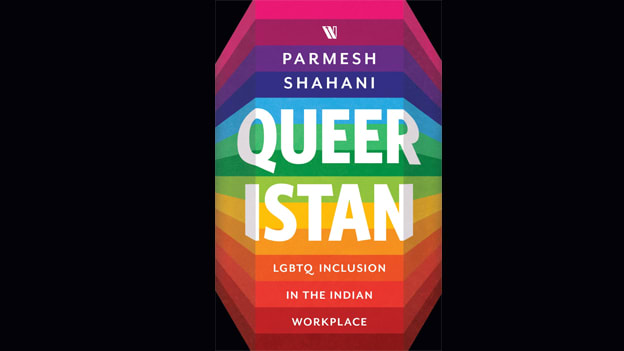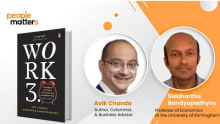Queeristan: A roadmap to LGBTQ inclusion in the Indian workplace

1861. 2009. 2013. 2014. 2018.
These five years constitute landmark years when speaking of LGBTQ+ history in India, with many more years of silent battles and protests that led to fruition to an extent, in some of these years. However, while some might look at these years and all that they brought as historic victory, in reality these victories just became a legal victory, with an ongoing struggle for cultural, societal and humanitarian equality, and workplace inclusion might just be the key to it all.
“Being LGBT is not a crime in India anymore, and there is absolutely nothing in the law that prevents you or your organization from being inclusive. But the law is only on paper. As citizens, it is our duty to translate the progress made in the courts into something real and tangible. It is also now time for workplaces to participate in this movement,” noted Parmesh Shahani.
Through powerful storytelling, practical roadmaps, economic value and a nudge to translate advocacy into action, in his latest book ‘Queeristan - LGBTQ inclusion in the Indian Workplace’, the Founder of Godrej India Culture Lab and Vice President of the Godrej Industries, Parmesh Shahani, lays down the facts, the scope, the history, the possible future and actionable steps that corporates in the Indian workplace can leverage, to understand and bring about transformational changes not just for the LGBTQ+ community, but in the long run, for their very organization, with a parallel lens of both culture and profits.
Celebrating change and calling out hypocrisy
Despite the draconian British curse of Section 377 being repealed in 2009, only to be reinstated in 2013, and being read down again in 2018, while several organizations felt parlayzed by the legal system all these years to demonstrate their support for the LGBTQ+ community through inclusive workplace policies, some organizations, a “miniscule minority”, stayed true to their value of inclusion and consistently supported their employees through reformed policies as they dicovered the need on the go, be it extending benefits to same-sex partners or even renewing their insurance and health benefits by suporting gender-affirming surgeries for their trans employees.
Inclusion isn’t just about advocacy, it isn’t just about creating an image that you support diversity, it is about acting upon those beliefs that you advocate.
Shahani brings forth this argument around advocacy for publicity and advocacy for inclusion. With several campaigns coming out to express solidarity for the LGBTQ+ community, asking for change, Shahani and several leaders from the corporate space call their bluff.
Acknowledging that yes, these campaigns are needed, conversations are needed, but are the companies behind these campaigns doing anything for their own LGBTQ+ employees? Besides painting their logos with the vibrant Pride colours every June, and releasing ad campaigns to make a stand and urge everyone to be inclusive, are these organizations reforming their own policies? This book brings forth a mirror showcasing the hypocrisy of the current Indian workplace. One that continues to be ignorant about tapping into internal reforms, yet showcases support by hopping onto the bandwagon every June.
In contrast to such hypocrisy, Shahani maintains that there are indeed a multitude of leaders, organizations, politicians - both LBTQ+ and allies - that are transforming the scene of inclusion. How? There are several examples in the book where organizations like Barclays, Tata Steel and many more took a stand when an LGBTQ+ employee reached out to them, and the organizations paid heed and implemented policies such as extending financial aid for gender-affirming surgeries, setting up ERGs to create safe spaces, encouraging sensitization workshops for leaderships as well as across all careers stages and celebrating, in these cases, their very first trans employees.
While these organizations were able to make these reforms once the employee reached out to them, not every organization will be able to do that, majorly due to an employee’s lack of confidence in the employer’s intent and ability to offer an inclusive and safe space, discouraging them from even coming out of the closet at the workplace. Which is why Shahani reckons, “It is only when you create progressive policies that your queer employees will be empowered to come out and avail of them."
"Progressive policies need to precede employees coming out, not the other way around.”
Balancing culture and economics
For decades now, inclusion has been looked upon as a cultural agenda. And now, especially now, when companies do need to be able to sustain, scale and make it through the rough tides, the economic value that the LGBTQ+ talent and consumer market brings along, cannot be ignored.
“US$200 Bn. This is the size of India’s queer economy. Out Now Consulting, a lesbian and gay marketing specialist, estimated India’s LGBTQ population to be 6 percent. This would suggest that ‘just under US$200 Bn (6 percent of GDP) can be assumed to be earned income from India’s estimated 45 million gay and lesbian adults,’ said Ian Johnson, the firm’s chief executive, who did a global report with Forbes in 2009.” With this number in 2009, a decade later, the number only goes upwards.
While the numbers above point out the consumer economics of the LGBTQ+ community, here is the economic benefits of having LGBTQ+ employees: “A study by the Boston Consulting Group found that companies that had above-average diversity in their management teams reported innovation revenue - the percentage of total revenue from new products and services launched over the past three years - to be 45 percent, versus an innovation revenue of 26 percent for companies with below-average leadership diversity - a difference of 19 percentage points.”
Beyond the numbers shared above, the book explodes with references to a number of reports and findings, highlighting the financial benefits of being inclusive. However, if organizations approach inclusion just from a financial standpoint, their efforts are bound to fall through.
Cultural acceptance must precede economic benefits.
As Shahani noted, ‘having their heart in the right place.”
Wings of change
In Queeristan, you see storytelling coincide with the existing and persisting brutal reality, with drops of optimism making its way from the roots of draconian laws, transfusing itself into the system through constant legal battles, empowering the custodians of a rightful, respectful and equitable world, hopeful and determined to bring about impending change.
“How about giving us jobs too, instead of just publicity?” quipped Shahani to himself, on being approached by a former batchmate for a LGBTQ+ campaign they were working on.
There was a time when marginalized sections were looked at as individuals needing support, but often that paints a frail image of them, which isn’t really the case, not anymore at least. These sections aren’t weak, they have been at a severe disadvantage from being able to access opportunities due to their perceived standing in the ecosystem, bias - conscious and unconscious - has led to them being kept at bay.
But now with the wheels of change in motion, what’s needed is representation, visibility and acceptance for all the segments under the diversity and inclusion umbrella, through not just words but action and reforms.
The detailed roadmap on how to approach, who to approach and how to translate intent into much needed action is what Queeristan gives you. From decoding the ‘LGBTQ Alphabet soup’ to understanding what policies are needed at the workplace to be truly LGBTQ+ inclusive, to how corporate dynasties like Godrej, Piramal and Tatas as well as younger organizations are not just being vocal individually but are coming together as changemakers to strengthen the corporate charter on being inclusive.
If you are someone who has an itch to make a difference, give this book a read, get your facts right, get your strategy right, reach out to the organizations and leaders in this space, figure out how you can use your power and influence to enhance LGBTQ+ inclusivity, and begin your journey of being a changemaker and trailblazer in workplace inclusion.











